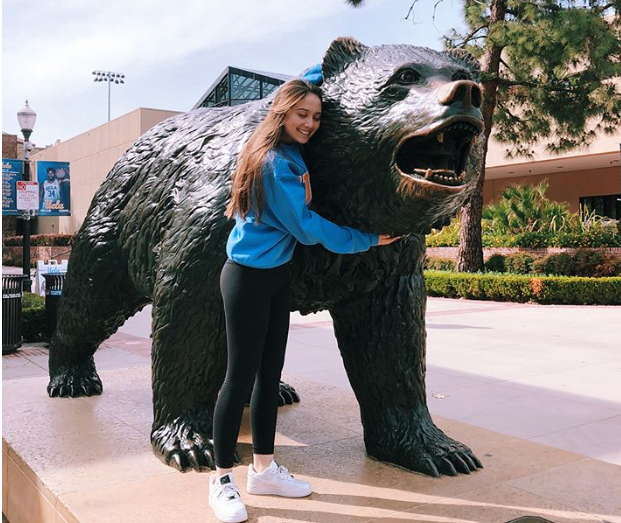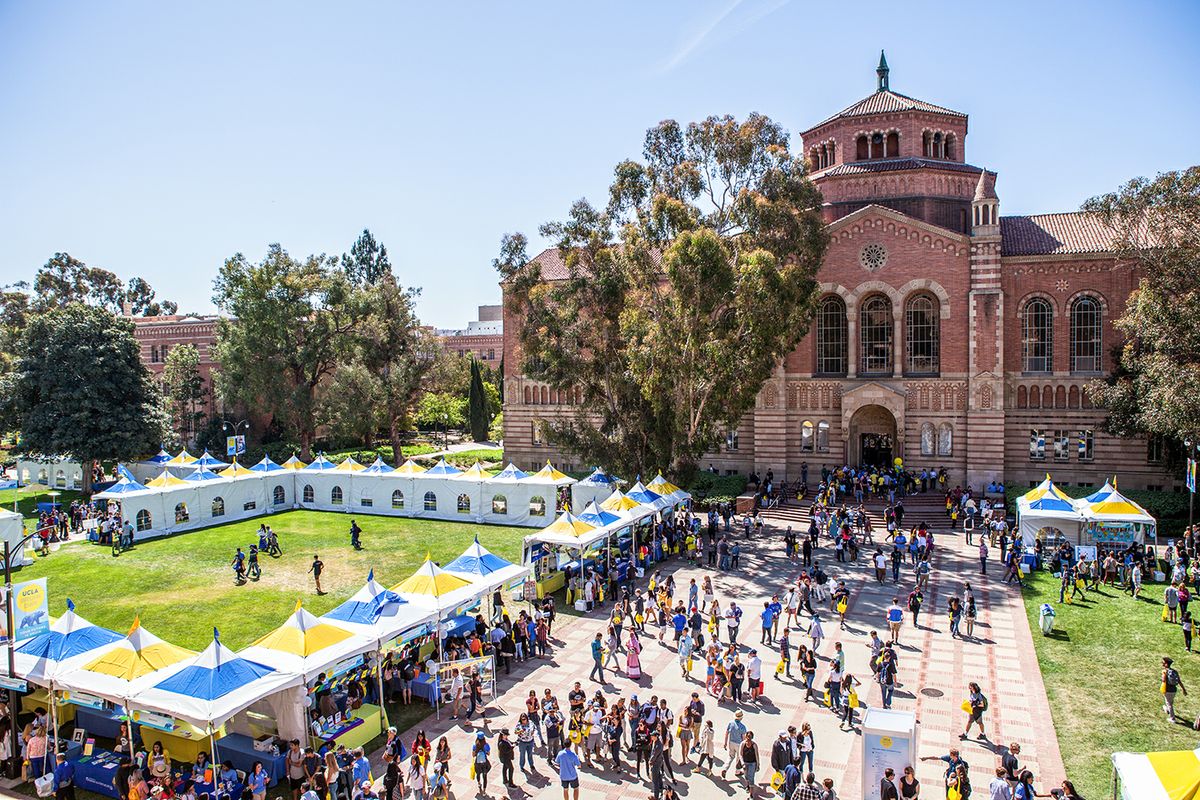
For millions of high school seniors throughout the world, March is a month anticipated with excitement as well as anxiety. This is the month UCLA will inform approximately one out of every eight freshman applicants that they have been accepted to the nation’s most applied-to university.


For alumni who remember a time when there was no such thing as applying online, the fact that so much of the process is now electronic is certainly one of the major changes that applying to UC has undergone. It is hardly the only change, however; in particular, talents, abilities and accomplishments beyond those shown in the classroom or on standardized tests play a much larger role in deciding who becomes a Bruin than in previous generations.
The UCLA Admission website is a great resource for students, parents and other interested parties, detailing how to apply, what is required, what is desired, what is the timeline and what options are available to those seven out of eight who are not admitted.
HOW APPLICANTS ARE REVIEWED
- All achievement – both academic and nonacademic/personal – is considered in the context of your educational circumstances, with an emphasis on the opportunities or challenges presented to you and your response to them.
- All applications are read twice, in their entirety, by two separate/independent admissions professionals
- We are familiar with most California schools and many around the nation. Our understanding of different schools and curricula is also supported by information we receive directly from schools, including communication with school personnel.
- Letters of recommendation are not accepted nor are interviews offered.
- There is no formula for gaining admission to UCLA. There are no minimum GPA or test scores that guarantee admission.
- The review focuses on consistent and ongoing participation in extracurricular activities, community service, special programs, and paid employment, with an emphasis on leadership, initiative and tenacity.
WHAT REVIEWERS EVALUATE
The admission review reflects the readers’ thoughtful consideration of the full spectrum of the applicant’s qualifications, based on all evidence provided in the application, and viewed in the context of the applicant’s academic and personal circumstances and the overall strength of the UCLA applicant pool. Using a broad concept of merit, readers employ the following criteria which carry no pre-assigned weights:
- The applicant’s full record of achievement in college preparatory work in high school, including the number and rigor of courses taken and grades earned in those courses.
- Personal qualities of the applicant, including leadership ability, character, motivation, tenacity, initiative, originality, creativity, intellectual independence, responsibility, insight, maturity and demonstrated concern for others and for the community.
- Likely contributions to the intellectual and cultural vitality of the campus.
- Performance on standardized tests, including the ACT plus Writing or SAT with Essay and any AP or IBHL examinations the applicant may have taken. (Note: despite suggestions by some that they are flawed and biased, a recently released UC report recommended that the university continue to use standardized testing in its admissions process.)
- Achievement in academic enrichment programs, including, but not limited to, those sponsored by the University of California.
- Other evidence of achievement.
- How fully the applicant has taken advantage of opportunities.
- How the applicant has responded to and/or overcome challenges.

In applying the criteria above, readers carefully consider evidence provided in the personal insight questions, as well as in the academic record and list of honors and achievements. “Personal insight” questions are meant to allow the applicant to “add clarity, richness and meaning to the information in the other parts” of the application. Applicants must answer four of the eight questions, which include describing examples of leadership; describing their creativity, talent or skill; discussing challenges; and indicating community service performed.
UCLA Undergraduate Admission reviews all applicants for admission. Freshman applicants to the UCLA College of Letters and Science are reviewed without regard for major. Therefore, no Letters and Science major (including Undeclared) is more or less selective than any other. Representatives from all other schools further review their respective applicants and admit students by major.
(Reference Freshman Selection page)
STATISTICS
As reported by UCLA Newsroom, in 2019 UCLA offered admission to more than 13,700 high school seniors out of 111,322 applicants, a 12% admission rate. 5,920 ultimately enrolled – 4,433 from California, 948 from out-of-state and 539 international students. In 1998, the earliest year for which statistics are posted on the website, there were less than 33,000 freshman applicants and the admission rate was 33%.
Among the 8,352 California residents admitted to the freshman class, 30% came from ethnic groups that have been historically underrepresented at UCLA: 23% were Chicano/Latino, 6% were African American and 1% were American Indian. Asian American students made up 41% and white students comprised 24% of admitted California freshmen. As indicated on the Admission website, a 1540 SAT score put you in the 75th percentile of all admits.
UCLA, which enrolls more transfer students than any other UC campus, offered admission in 2019 to 5,335 transfer students out of 24,121 applicants, a 22% admission rate; 3,283 ultimately enrolled. Of those offered admission, 94% attended a California community college. Of those admitted in-state students, 36% were white, 26% were Chicano/Latino, 27% were Asian American and 6% were African American. This year, the number of transfer applications increased by more than 7%.

Bruin Day
For those students who are not granted admission, there is an appeal process, but it is restricted to those who have “new” information to share that wasn’t included on their original application. As indicated here, “for an appeal to have merit it must bring to light new academic and personal information, as well as information pertaining to extenuating circumstances, that had not been present in the application—information that clearly shows the student to be stronger than had been earlier evidenced.” Historically, an extremely small number of students have been admitted as the result of an appeal.
Students who are fortunate enough to be accepted must make the decision whether or not to enroll at UCLA by May 1. That is the deadline for submitting enrollment deposits and applications for on-campus housing (over 98% of all freshmen students live on campus). To help accepted students in their decision-making process, UCLA will host two instances of "Bruin Day" — April 11 for freshmen and May 9 for transfers — which are designed to give students and their families an introduction to the University and, it is hoped, convince them to become Bruins.
Some students who are not offered admission will be placed on a waitlist; the number of students from the list who ultimately gain admission can vary greatly from year to year, depending on the number of students who submit their Statement of Intent to Register (SIR/commitment deposit) by the commitment deadline
COSTS
The Admission website's estimated student budget page gives an indication of the monetary costs incurred by today's UCLA students:
2020-2021 Estimated Undergraduate Student Budget
Per Academic Year (nine months)
|
UCLA Residence Halls |
Off Campus Apartments |
Living with Relatives |
|
|---|---|---|---|
| Tuition and Fees | $13,239 | $13,239 | $13,239 |
| Room and Meals | $16,104 | $15,240 | $6,837 |
| Books and Supplies | $1,314 | $1,314 | $1,314 |
| Trans- portation |
$588 | $1,029 | $1,956 |
| Personal | $1,422 | $1,650 | $1,761 |
| Health Insurance | $2,668 | $2,668 | $2,668 |
| Total – California Residents | $35,335 | $35,140 | $27,775 |
| Nonresident Supple- mental Tuition |
$29,754 | $29,754 | $29,754 |
| Total – Non- residents |
$65,089 | $64,894 | $57,529 |
For more detailed fee information see the Registrar's Office fee page.
For those Bruins who attended UCLA when it was almost exclusively a commuter campus – and even for those who attended in more recent decades - these numbers represent another major difference between the UCLA they knew and the one we see today. Despite the dramatically greater cost of a UCLA education, however, demand continues to increase – along with the amazing depth and breadth of applicants’ abilities, accomplishments and contributions.
Before April arrives, the next group of potential Bruins will have been identified and notified. Click here to see the reactions of some of last year's admits as they received the news that over 100,000 were hoping to get.